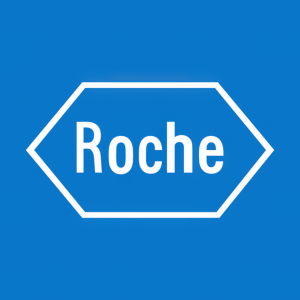Roche’s Vabysmo showed extended durability, continued efficacy and a consistent safety profile in long-term diabetic macular edema (DME) study
Rhea-AI Summary
Roche announced four-year data from the RHONE-X extension study for Vabysmo (faricimab) in treating diabetic macular edema (DME). The study met all primary endpoints, demonstrating Vabysmo's consistent safety profile. Key findings include:
- Over 90% of patients showed absence of DME after four years
- Nearly 80% of patients received treatment at 3-4 month intervals
- Sustained vision gains and anatomical improvements were observed
- Vabysmo continued to preserve vision and dry retinal fluid
This is the largest long-term extension dataset in DME to date, reinforcing Vabysmo's potential as a standard of care treatment for the 29 million people affected by DME worldwide.
Positive
- Over 90% of patients achieved absence of DME after four years
- Nearly 80% of patients extended treatment intervals to every 3-4 months
- Sustained vision gains and anatomical improvements over four years
- Vabysmo is approved in nearly 100 countries for DME and nAMD
- More than four million doses of Vabysmo distributed worldwide since 2022
Negative
- None.
News Market Reaction 1 Alert
On the day this news was published, RHHBY gained 7.53%, reflecting a notable positive market reaction.
Data tracked by StockTitan Argus on the day of publication.
- More than
90% of patients had absence of DME after four years in a pre-specified exploratory endpoint - People treated with Vabysmo sustained vision gains and anatomical improvements, with almost
80% receiving treatment at intervals of three or four months, in an exploratory analysis - The study met all primary endpoints, showing safety data were consistent with Vabysmo’s known safety profile
- This is the largest long-term extension dataset in DME to-date, demonstrating consistent positive results in a highly prevalent eye condition
Basel, 17 July 2024 - Roche (SIX: RO, ROG; OTCQX: RHHBY) announced today new, four-year data from the RHONE-X extension study.1 The study met all primary endpoints, showing that Vabysmo® (faricimab) was well tolerated in people with diabetic macular edema (DME) who received treatment for up to four years.2 Exploratory results from the long-term study showed that Vabysmo continued to preserve vision, dry retinal fluid that can impair sight, and allow extended time between treatments in people with DME.2 These data were presented in a late-breaking oral presentation at The American Society of Retina Specialists (ASRS) 2024 Annual Meeting in Stockholm, Sweden.2
“These four-year data build on our pivotal studies and reinforce Vabysmo’s potential to become standard of care treatment for diabetic macular edema (DME), which affects 29 million people worldwide,” said Levi Garraway, M.D., Ph.D., Roche’s Chief Medical Officer and Head of Global Product Development. “We are especially pleased to see that 9 out of 10 patients showed no sign of DME after four years of treatment with Vabysmo, which is an incredible long-term outcome for people living with this condition.”
The RHONE-X study is the largest long-term extension dataset in DME, a leading cause of vision loss in people with diabetes.3,4
“I have been using Vabysmo as a first-line treatment for all the approved indications, including diabetic macular edema, and the positive long-term safety and efficacy results from the RHONE-X study are consistent with my clinical experience for over two years,” said study investigator Arshad M. Khanani, M.D., Director of Clinical Research at Sierra Eye Associates and Clinical Professor at the University of Nevada, Reno, who presented the data at the ASRS.
During RHONE-X, all participants were treated with Vabysmo on a personalised treat-and-extend regimen, where the time between Vabysmo treatments could be increased based on retinal fluid levels and visual acuity. Results of the exploratory analysis showed that at the end of four years, nearly
To date, Vabysmo is approved in nearly 100 countries for DME and neovascular or ‘wet’ age-related macular degeneration (nAMD).3,5-8 It is also approved in several countries, including the United States and Japan, for the treatment of macular edema following retinal vein occlusion.3,5,9 More than four million doses of Vabysmo have been distributed worldwide since its initial US approval in 2022.3
About RHONE-X1
RHONE-X is a multicentre two-year extension study designed to evaluate the long-term safety and tolerability of Vabysmo® (faricimab) in 1,474 patients with diabetic macular edema who completed one of the two Phase III studies, YOSEMITE (NCT03622580) or RHINE (NCT03622593).10,11 Patients in YOSEMITE and RHINE were treated with either Vabysmo or 2 mg aflibercept. Patients in RHONE-X were all treated with Vabysmo according to a personalised treatment interval.
The primary objectives were to evaluate the long-term safety and tolerability of Vabysmo, including ocular adverse events (AEs), non-ocular AEs and presence of anti-drug antibodies. The study also had an exploratory objective to assess the long-term efficacy of Vabysmo.
About diabetic macular edema
Affecting around 29 million people globally, diabetic macular edema (DME) is a vision-threatening retinal condition associated with blindness and decreased quality of life when left untreated.12,13 DME occurs when damaged blood vessels leak into and cause swelling in the macula – the central area of the retina responsible for the sharp vision needed for reading and driving.14,15 The number of people with DME is expected to grow as the prevalence of diabetes increases.16
About the Vabysmo® (faricimab) clinical development programme
Roche has a robust Phase III clinical development programme for Vabysmo. The programme includes AVONELLE-X (NCT04777201), an extension study of TENAYA (NCT03823287) and LUCERNE (NCT03823300), evaluating the long-term safety and tolerability of Vabysmo in neovascular or ‘wet’ age-related macular degeneration (nAMD).17 Roche has also initiated several Phase IV studies, including the ELEVATUM (NCT05224102) study of Vabysmo in underrepresented patient populations with diabetic macular edema, the SALWEEN study of Vabysmo in a subpopulation of nAMD highly prevalent in Asia, and the POYANG (NCT06176352) study of Vabysmo in adult treatment-naive patients with choroidal neovascularisation secondary to pathologic myopia.18-20 Roche has also initiated the VOYAGER (NCT05476926) study, a global real-world data collection platform, and supports several other independent studies to further understand retinal conditions with a high unmet need.21
About Vabysmo® (faricimab)
Vabysmo is the first bispecific antibody approved for the eye.5,22 It targets and inhibits two signalling pathways linked to a number of vision-threatening retinal conditions by neutralising angiopoietin-2 (Ang-2) and vascular endothelial growth factor-A (VEGF-A). Ang-2 and VEGF-A contribute to vision loss by destabilising blood vessels, causing new leaky blood vessels to form and increasing inflammation. By blocking pathways involving Ang-2 and VEGF-A, Vabysmo is designed to stabilise blood vessels.22,23 Vabysmo is approved in nearly 100 countries around the world, including the United States (US), Japan, the United Kingdom and the European Union, for people living with neovascular or ‘wet’ age-related macular degeneration and diabetic macular edema, and in several countries, including the US and Japan, for the treatment of macular edema following retinal vein occlusion.3,5,9 Review by other health authorities is ongoing.
About Roche in ophthalmology
Roche is focused on saving people’s eyesight from the leading causes of vision loss through pioneering therapies. Through our innovation in the scientific discovery of new potential drug targets, personalised healthcare, molecular engineering, biomarkers and continuous drug delivery, we strive to design the right therapies for the right patients.
We have the broadest retina pipeline in ophthalmology, which is led by science and informed by insights from people with eye diseases. Our pipeline includes gene therapies and treatments across multiple vision-threatening conditions, including diabetic eye diseases, geographic atrophy and autoimmune conditions, such as thyroid eye disease and uveitic macular edema.
Applying our extensive experience, we have already brought breakthrough ophthalmic treatments to people living with vision loss. Susvimo® (previously called Port Delivery System with ranibizumab) 100 mg/mL for intravitreal use via ocular implant is the first United States (US) Food and Drug Administration-approved refillable eye implant for neovascular or ‘wet’ age-related macular degeneration (nAMD) that continuously delivers a customised formulation of ranibizumab over a period of months.24,25 Vabysmo® (faricimab) is the first bispecific antibody approved for the eye, which targets and inhibits two signalling pathways linked to a number of vision-threatening retinal conditions by neutralising angiopoietin-2 and vascular endothelial growth factor-A.5,22,23 Vabysmo is approved around the world for people living with nAMD and diabetic macular edema, and in several countries, including the US and Japan, for macular edema following retinal vein occlusion.3,5-9 Lucentis® (ranibizumab injection)* was the first treatment approved to improve vision in people with certain retinal conditions.26
About Roche
Founded in 1896 in Basel, Switzerland, as one of the first industrial manufacturers of branded medicines, Roche has grown into the world’s largest biotechnology company and the global leader in in-vitro diagnostics. The company pursues scientific excellence to discover and develop medicines and diagnostics for improving and saving the lives of people around the world. We are a pioneer in personalised healthcare and want to further transform how healthcare is delivered to have an even greater impact. To provide the best care for each person we partner with many stakeholders and combine our strengths in Diagnostics and Pharma with data insights from the clinical practice.
In recognising our endeavour to pursue a long-term perspective in all we do, Roche has been named one of the most sustainable companies in the pharmaceuticals industry by the Dow Jones Sustainability Indices for the fifteenth consecutive year. This distinction also reflects our efforts to improve access to healthcare together with local partners in every country we work.
Genentech, in the United States, is a wholly owned member of the Roche Group. Roche is the majority shareholder in Chugai Pharmaceutical, Japan.
For more information, please visit www.roche.com.
*Lucentis® (ranibizumab injection) was developed by Genentech, a member of the Roche Group. Genentech retains commercial rights in the United States and Novartis has exclusive commercial rights for the rest of the world.
All trademarks used or mentioned in this release are protected by law.
References
[1] Clinical Trials.gov. A study to evaluate the long-term safety and tolerability of Vabysmo in participants with diabetic macular edema (DME) (RHONE-X). [Internet; cited July 2024]. Available from: https://clinicaltrials.gov/ct2/show/NCT04432831.
[2] Khanani, A.M. (2024, July 17). Four-year outcomes of faricimab in DME: First-time safety and efficacy results from the RHONE-X long-term extension trial. The American Society of Retina Specialists (ASRS) 2024 Annual Meeting in Stockholm, Sweden.
[3] Roche data on file.
[4] Lee, R., Wong, T.Y. & Sabanayagam, C. Epidemiology of diabetic retinopathy, DME and related vision loss. Eye and Vision 2, 17 (2015). https://doi.org/10.1186/s40662-015-0026-2.
[5] United States (US) Food and Drug Administration (FDA). Highlights of prescribing information, Vabysmo. 2022. [Internet; cited July 2024]. Available from: https://www.accessdata.fda.gov/drugsatfda_docs/label/2022/761235s000lbl.pdf.
[6] Medicines and Healthcare products Regulatory Agency approves faricimab through international work-sharing initiative. [Internet; cited July 2024]. Available from: https://www.gov.uk/government/news/mhra-approves-faricimab-through-international-work-sharing-initiative.
[7] European Medicines Agency. Summary of product characteristics, Vabysmo. 2022. [Internet; cited July 2024]. Available from: https://www.ema.europa.eu/en/documents/product-information/vabysmo-epar-product-information_en.pdf.
[8] Chugai obtains regulatory approval for Vabysmo, the first bispecific antibody in ophthalmology, for neovascular or ‘wet’ age-related macular degeneration (nAMD) and DME. [Internet; cited July 2024]. Available from: https://www.chugai-pharm.co.jp/english/news/detail/20220328160002_909.html.
[9] Chugai obtains regulatory approval for Vabysmo, the only bispecific antibody in the ophthalmology field, for additional indication of macular edema associated with retinal vein occlusion (RVO). [Internet; cited July 2024]. Available from: https://www.chugai-pharm.co.jp/english/news/detail/20240326160000_1054.html.
[10] Clinical Trials.gov. A study to evaluate the efficacy and safety of faricimab in participants with DME (YOSEMITE). [Internet; cited July 2024]. Available from: https://clinicaltrials.gov/ct2/show/NCT03622580.
[11] Clinical Trials.gov. A study to evaluate the efficacy and safety of faricimab in participants with DME (RHINE). [Internet; cited July 2024]. Available from: https://clinicaltrials.gov/ct2/show/NCT03622593.
[12] Im JHB, et al. Prevalence of DME based on optical coherence tomography in people with diabetes: a systematic review and meta-analysis. Survey of Ophthalmology. 2022 Jul-Aug;67(4):1244-1251.
[13] The Lancet. Diabetes: A defining disease of the 21st century. Lancet. 2023 24;401(10394):2087.
[14] All About Vision. Macula lutea. [Internet; cited July 2024]. Available from: https://www.allaboutvision.com/resources/macula.
[15] National Eye Institute. Diabetic Retinopathy. [Internet; cited July 2024]. Available from: https://www.nei.nih.gov/learn-about-eye-health/eye-conditions-and-diseases/diabetic-retinopathy.
[16] Liu E, et al. DME: Clinical risk factors and emerging genetic influences. Clinical and Experimental Optometry. 2017;100:569–76.
[17] Clinical Trials.gov. A study to evaluate the long-term safety and tolerability of Vabysmo in participants with nAMD (AVONELLE-X). [Internet; cited July 2024]. Available from: https://clinicaltrials.gov/ct2/show/NCT04777201.
[18] Clinical Trials.gov. A study to investigate faricimab treatment response in treatment-naïve, underrepresented patients with DME (ELEVATUM). [Internet; cited July 2024]. Available from: https://clinicaltrials.gov/ct2/show/NCT05224102.
[19] APVRS. Design and rationale of the SALWEEN trial: A Phase IIIb/IV study of faricimab, a dual angiopoietin-2 and vascular endothelial growth factor-a inhibitor, in patients with polypoidal choroidal vasculopathy. [Internet; cited July 2024]. Available from: https://2022.apvrs.org/abstract/?code=200351.
[20] Clinical Trials.gov. A study to evaluate the efficacy and safety of faricimab in patients with choroidal neovascularization secondary to pathologic myopia (POYANG). [Internet; cited July 2024]. Available from: https://www.clinicaltrials.gov/study/NCT06176352.
[21] Clinical Trials.gov. A real-world study to gain clinical insights into Roche ophthalmology products (VOYAGER). [Internet; cited July 2024]. Available from: https://clinicaltrials.gov/ct2/show/NCT05476926.
[22] Heier JS, et al. Efficacy, durability, and safety of intravitreal faricimab up to every 16 weeks for nAMD (TENAYA and LUCERNE): two randomised, double-masked, Phase III, non-inferiority trials. The Lancet. 2022; 399:729-40.
[23] Wykoff C, et al. Efficacy, durability, and safety of intravitreal faricimab with extended dosing up to every 16 weeks in patients with DME (YOSEMITE and RHINE): Two randomised, double-masked, Phase III trials. The Lancet. 2022; 399:741-755.
[24] US FDA. Highlights of prescribing information, Susvimo. 2021. [Internet; cited July 2024]. Available from: https://www.accessdata.fda.gov/drugsatfda_docs/label/2021/761197s000lbl.pdf.
[25] Holekamp N, et al. Archway randomised Phase III trial of the Port Delivery System with ranibizumab for nAMD. Ophthalmology. 2021.
[26] US FDA. Highlights of prescribing information, Lucentis. 2014. [Internet; cited July 2024]. Available from: https://www.accessdata.fda.gov/drugsatfda_docs/label/2012/125156s0069s0076lbl.pdf.
Roche Global Media Relations
Phone: +41 61 688 8888 / e-mail: media.relations@roche.com
| Hans Trees, PhD Phone: +41 79 407 72 58 | Sileia Urech Phone: +41 79 935 81 48 |
| Nathalie Altermatt Phone: +41 79 771 05 25 | Simon Goldsborough Phone: +44 797 32 72 915 |
| Karsten Kleine Phone: +41 79 461 86 83 | Nina Mählitz Phone: +41 79 327 54 74 |
| Kirti Pandey Phone: +49 172 6367262 | Yvette Petillon Phone: +41 79 961 92 50 |
| Dr. Rebekka Schnell Phone: +41 79 205 27 03 | Lorena Corfas Phone: +34 620 29 25 51 |
Roche Investor Relations
| Dr. Bruno Eschli Phone: +41 61 68-75284 e-mail: bruno.eschli@roche.com | Dr. Sabine Borngräber Phone: +41 61 68-88027 e-mail: sabine.borngraeber@roche.com |
| Dr. Birgit Masjost Phone: +41 61 68-84814 e-mail: birgit.masjost@roche.com |
Investor Relations North America
| Loren Kalm Phone: +1 650 225 3217 e-mail: kalm.loren@gene.com |
Attachment








